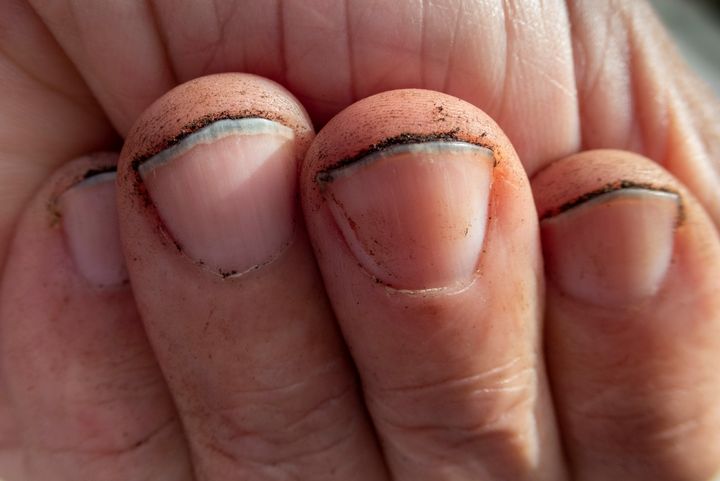
You may already know that your nails can reveal a lot more about your health than many of us expect ― for instance, a brown line in your nail bed can alert you to the presence of some cancers.
But what about what’s happening under the nail?
I, for one, had no idea that most of the gunk under your nails is actually not dirt. Dana Stern, M.D., a dermatologist, told Women’s Health that “the ‘gunk’ underneath fingernails is most commonly the keratin debris from the underside of the nail, as well as skin cells from the nail bed.”
That’s usually grey. But what do other colours mean, and when should you worry?
Green gunk under your nails might be a red flag sign for health issues
“Pseudomonas, for example, is commonly found on nails and produces a green pigment that nail technicians often refer to as ‘the greenies,’” Stern told Women’s Health.
They’re more common among people who wear artificial nails, as their extra length gives them more surface area to harbour germs and their attachment to your natural nails gives the germs more access to your skin.
The bacteria thrive in moist conditions like jacuzzis, contact lens solutions, sinks, and bath sponges.
Sometimes, this can cause an infection.
The American Osteopathic College of Dermatology (AOCD) says, “The green discolouration varies from blue-green to dark green to bluish-grey.”
Though the nail doesn’t become sore, the skin around it might become red, swollen, and tender.
“Since the discolouration is underneath the nail, it will not disappear with washing or scrubbing,” the AOCD add.
“The condition is usually confined to one or two nails and can involve fingernails or toenails.”
How can I prevent it, and what should I do if I spot it?
“Bacteria that [are] not completely removed from a nail plate prior to the application of an enhancement can cause pseudomonas to grow in the space between the nail plate and the enhancement,” Dr. Dana Stern wrote for Nails Magazine; so ensure you clean your nails properly before getting any gels or acrylics.
Aside from keeping them short, you can also dig your nails into a bar of soap when you shower to deep-clean them and get the gunk out, she told Women’s Health.
Lastly, the pro advises against using a nail brush, as they can harbour bacteria in their bristles.
If the condition has become bacterial, AOCD says “Therapy consists of cutting the detached portion of the nail, keeping nails dry, and avoiding trauma to the area.”
You can also apply topical antibiotics, a 1:4 mix of chlorine bleach and water, or vinegar to the affected area (following professional medical advice).
Speak to your doctor if you’re worried about your nail health.